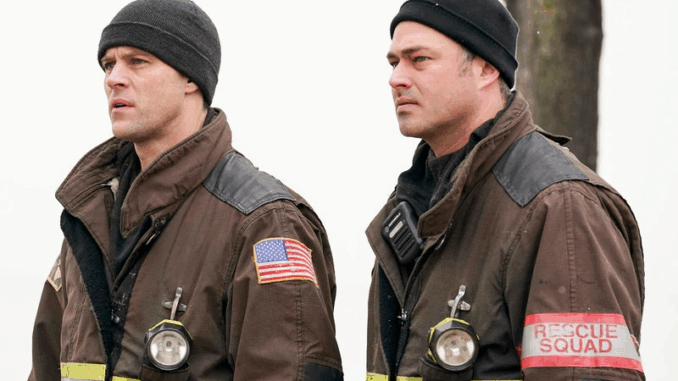
For over a decade, the relationship between Squad 3 Lieutenant Kelly Severide and Truck 81 Lieutenant Stella Kidd has been the emotional core of NBC’s hit drama, Chicago Fire. Their slow-burn romance, from initial flirtation to a deeply-earned marriage, has captivated millions. For many, the “Stellaride” love story is the very reason to keep tuning in, a rock of stability in a show famous for its high-stakes drama and character departures. The popular belief is that as long as Severide and Kidd are at Firehouse 51, the show’s future is secure.
However, while their partnership is undoubtedly a vital part of the show’s success, it’s an uncomfortable truth that Severide and Kidd cannot, on their own, save Chicago Fire‘s future. The series is facing significant challenges—a rotating cast, narrative stagnation, and the inherent limitations of a completed love story—that are far too big for one couple to fix. To secure its place as a television mainstay for years to come, the show must look beyond its anchor couple and remember what truly makes a great ensemble drama.
The Weight of an Anchor Couple
The role of an “anchor couple” on a long-running show is a double-edged sword. While they provide stability and an emotional center for the audience, their very longevity can create a narrative trap. After over a decade of build-up, Severide and Kidd are now married and seemingly happy. Their major romantic conflicts are resolved. So what is left for them to do? The show is in a difficult position: either it makes their lives unrealistically dramatic with constant breakups and make-ups, or it leaves them in a state of contented domesticity that, while satisfying for fans, can become narratively stagnant.
The show has a history of giving Severide dramatic, often implausible, solo storylines to keep him engaged when his personal life is stable. From his long-winded arson investigations to his extended absences, these plots feel like a desperate attempt to add conflict to a character whose romantic arc is essentially complete. The same could be said for Stella Kidd, whose Girls on Fire program, while inspiring, has often felt secondary to her relationship with Severide. The pressure on their characters to provide constant, compelling drama is immense, and it’s a burden that no two characters can carry alone without risking creative fatigue.
The Ensemble Problem
Chicago Fire has always been an ensemble show. Its strength lies in the interconnected web of relationships at Firehouse 51, where every member plays a crucial role. From Chief Boden to Herrmann, from Mouch to Ritter, the show’s appeal is rooted in its sense of family. But in recent seasons, the show has experienced a significant number of cast departures, leaving major holes in that ensemble. Characters like Matt Casey, Gabby Dawson, Sylvie Brett, and Blake Gallo were not just side players; they were pillars of the firehouse, and their exits have left a void that is difficult to fill.
Simply relying on Severide and Kidd to be the sole emotional core of the show is a major disservice to the entire series. It diminishes the importance of other characters and puts an unhealthy amount of pressure on one storyline. The future of Chicago Fire depends on its ability to create new, compelling character dynamics and to introduce new fan-favorite relationships. The show needs to make us care just as much about the new generation of firefighters and paramedics as we did about the originals. A truly great ensemble show is one that can withstand cast changes and still maintain its emotional integrity. The question is, can Chicago Fire do that?
The Creative Stagnation Trap
After over 12 seasons, creative stagnation is a real and dangerous threat to any show. Writers can fall into the trap of recycling old storylines, relying on familiar tropes, and playing it safe. The heavy focus on Severide and Kidd, while understandable from a ratings perspective, can be seen as a symptom of this very problem. The show is afraid to take risks with new characters and new plots, so it defaults to the known quantity—the couple that everyone loves.
But for Chicago Fire to remain relevant and compelling, it needs to be bold. It needs to create new mysteries for its characters to solve, new traumas for them to overcome, and new relationships for us to invest in. It needs a new generation of characters that can one day become the new Severide and Kidd. The show must avoid the crutch of relying on one couple to carry the entire narrative weight. The future of the show is not just about the characters who have been there for over a decade; it’s about the characters who are just beginning their journey.
In the end, while the “Stellaride” romance is a testament to the show’s past success, it cannot be the sole focus of its future. For Chicago Fire to truly survive, it must go back to its roots as an ensemble drama, rebuild its cast, and take creative risks beyond its most popular couple. The show’s future depends on it.
